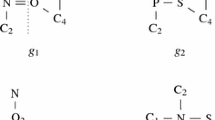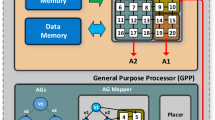Abstract
Graphs are suitable data structures for expressing the relationship between different types of data. With a continuous increase in the graph size, using suitable methods to divide graphs and parallelize the processing load becomes crucial. Balanced graph partitioning has been extensively studied for static and streaming graphs. However, for a time-evolving graph (TEG), whose size and structure are periodically updated, related partitioning methods are lacking. A straightforward approach is to capture snapshots of a TEG and adopt the partitioning methods designed for static or streaming graphs. Although feasible partitioning quality can be expected, the time overhead is high due to frequent repartitioning. This paper proposes two TEG partitioning methods, namely seed and similarity, to decrease the partitioning time. According to the experimental results, on average, seed and similarity require 29–39% of the partitioning time required by snapshot. Moreover, the proposed methods maintain reasonable partitioning quality.










Similar content being viewed by others
References
Oussous A, Benjelloun FZ, AitLahcen A, Belfkih S (2018) Big data technologies: a survey. J King Saud UnivComputInfScinces 30(4):431–448
Khan N, Yaqoob I, Hashem IA, Inayat Z, Ali WK, Alam M, Shiraz M, Gani A (2014) Big data: Survey, technologies, opportunities, and challenges. Sci World J. https://doi.org/10.1155/2014/712826
Zheng Y, Capra L, Wolfson O, Yang H (2014) Urban computing: concepts, methodologies, and applications. ACM Trans IntellSystTechnol. https://doi.org/10.1145/2629592
Elshawi R, Batarfi O, Fayoumi A, Bamawi A, Sakr S (2015) Big graph processing systems: state-of-the-art and open challenges. In: Proceedings of the 1st International Conference on Big Data Computing Service and Applications. https://doi.org/10.1109/BigDataService. 2015.11
Lim SH, Lee S, Ganesh G, Brown TC, Sukumar SR (2015) Graph processing platforms at scale: practices and experiences”. Proc ISPASS. https://doi.org/10.1109/ISPASS.2015.7095783
Sharma S, Chou J (2020) A survey of computation techniques on time evolving graphs. Int J Big Data Intell 7(1):1–14. https://doi.org/10.1504/IJBDI.2020.106151
Stanton I, Kliot G (2012) Streaming graph partitioning for large distributed graphs. In: Proceedings of KDD’12. https://doi.org/10.1145/2339530.2339722
Iyer AP, Li LE, Das T, Stoica I (2016) Time-evolving graph processing at scale. In: Proceedings of GRADES’16. https://doi.org/10.1145/2960414.2960419
Buluc A, Meyerhenke H, Safro I, Sanders, P, Schulz C (2015) Recent advances in graph partitioning. arXiv:1311.3144v3[cs.DS].
Karypis G, Kumar V (1999) A fast and high quality multilevel scheme for partitioning irregular graphs. J Sci Comput 20(1):359–392
Tsourakakis C, Gkantsidis C, Radunovic B, Vojnovic M (2014) Fennel: streaming graph partitioning for massive scale graphs. In: Proceedings of WSDM’14. https://doi.org/10.1145/2556195.2556213
Gonzalez JE, Low Y, Gu H, Bickson D, Guestrin C (2012) PowerGraph: distributed graph-parallel computation on natural graphs. In: Proceedings of OSDI’12, pp 17–30
Petroni F, Querzoni L, Daudjee K, Kamali S, Iacoboni G (2015) HDRF: stream-based partitioning for power-law graphs. In: Proceedings of CIKM’15. https://doi.org/10.1145/2806416.2806424
Jiang JY, Lee YH, Lai KC (2018) A streaming graph partitioning approach on distributed systems. In: Proceedings of 8th International Conference on Engineering and Applied Science, pp 229–237.
Abdolrashidi A, Ramaswamy L (2015) Incremental partitioning of large time-evolving graphs. Proc CIC. https://doi.org/10.1109/CIC.2015.37
Filippidou I, Kotidis Y (2015) Online and on-demand partitioning of streaming graphs. ProcIntConf Big Data. https://doi.org/10.1109/BigData.2015.7363735
Mayer C, Mayer R, Tariq MA, Geppert H, Laich L, Rieger L, Rothermel K (2018) ADWISE: adaptive window-based streaming edge partitioning for high-speed graph processing. In: Proceedings of ICDCS. https://doi.org/10.1109/ICDCS.2018.00072
Abbas A, Kalavri V, Carbone P, Vlassov V (2018) Streaming graph partitioning: an experimental study. In: Proceedings of the VLDB endowment. https://doi.org/10.14778/3236187.3236208
Leskovec J, Krevl A (2014) SNAP datasets: Stanford large network dataset collection, Jun. 2014, https://snap.stanford.edu/data. Accessed 18 Mar 2021
Acknowledgements
This study was sponsored by the Ministry of Science and Technology, Taiwan, R.O.C., under contract numbers MOST 106-2221-E-142-005 and MOST 107-2221-E-142-006.
Author information
Authors and Affiliations
Corresponding author
Additional information
Publisher's Note
Springer Nature remains neutral with regard to jurisdictional claims in published maps and institutional affiliations.
Rights and permissions
About this article
Cite this article
Lee, YH., Jian, SJ. Effective partitioning mechanisms for time-evolving graphs in the Flink system. J Supercomput 77, 12336–12354 (2021). https://doi.org/10.1007/s11227-021-03769-6
Accepted:
Published:
Issue Date:
DOI: https://doi.org/10.1007/s11227-021-03769-6




